Exploring Personal Transformation Through the Lens of Neuroscience
Written on
In the realm of neuroscience, a significant portion of our work involves interpreting brain images. A frequent question I ponder is, “what space am I in?” This phrase refers to the various types of image spaces we encounter, such as "native space," "standard space," "functional space," and more. For many students new to brain imaging, grappling with these different spaces can be quite challenging. However, with time, one can develop an intuition for navigating these various dimensions.
An image space consists of dimensions measured in specific units. Within this framework, an anatomical brain image is typically a three-dimensional volume comprised of pixel intensities corresponding to each unit's location.
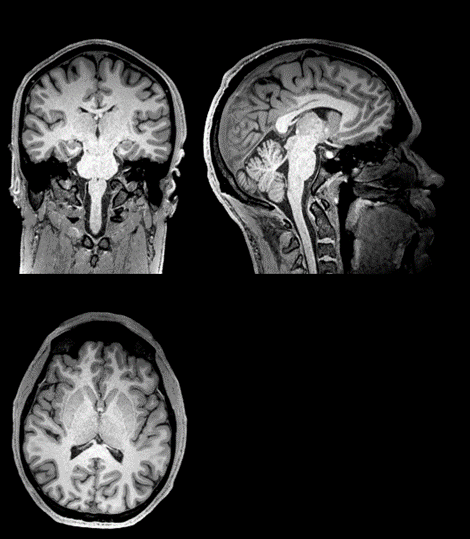
By employing sophisticated measurement techniques, we can differentiate tissue types by their brightness. For instance, an anatomical image can reveal variations in fat and water content. Other imaging techniques might highlight different aspects, such as damage, blood flow, or oxygen levels.
One of the most complex aspects of analyzing these images is aligning the various spaces accurately. For example, if you're interested in pinpointing brain activity, functional images may not correspond well to anatomical details, complicating the task of identifying precise locations of activity.
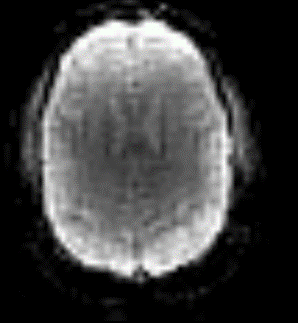
To accurately locate activity within an individual, it's essential to obtain a reliable anatomical image alongside the functional one and align them as best as possible. Another hurdle researchers face is the variability in brain structures among different subjects, complicating statistical analysis and generalizability. Establishing a standard reference helps facilitate comparisons across studies.
The tools and strategies available for addressing these challenges are extensive, though not always straightforward. Just as a Guitar Hero player may visualize scrolling notes after a gaming session, I found myself dreaming of images flipping and morphing after long hours of work with image spaces. This journey led me to conceptualize my own identity as a “native space,” paralleling the individual brain images we study. I realized that I continuously adapt this personal space to suit various contexts, much like the transformations I perform in my professional work.
One key takeaway from this introspection has been understanding my identity as a series of linear transformations across different contexts. Linear transformations preserve the structure of a vector space, ensuring that parallel lines remain so. In neuroscience, we often utilize a basic linear transformation called "rigid body transformation" to align two images from the same participant. This involves translations (shifts in any direction) and rotations (turns around three axes).
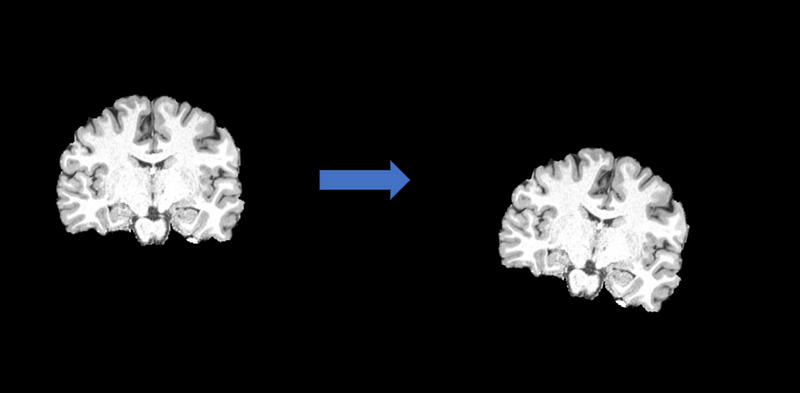
For illustrative purposes, let's simplify my personality to three dimensions, using the personality dimensions proposed by the controversial psychologist Hans Eysenck: 1) extraversion-introversion, 2) neuroticism-emotional stability, and 3) psychoticism-social normality.
On any given day, my personality may be represented within a small shape across these dimensions, where the "intensities" indicate the probability of exhibiting a particular set of traits. Although this shape remains relatively stable, my average levels of extraversion, neuroticism, and psychoticism fluctuate.
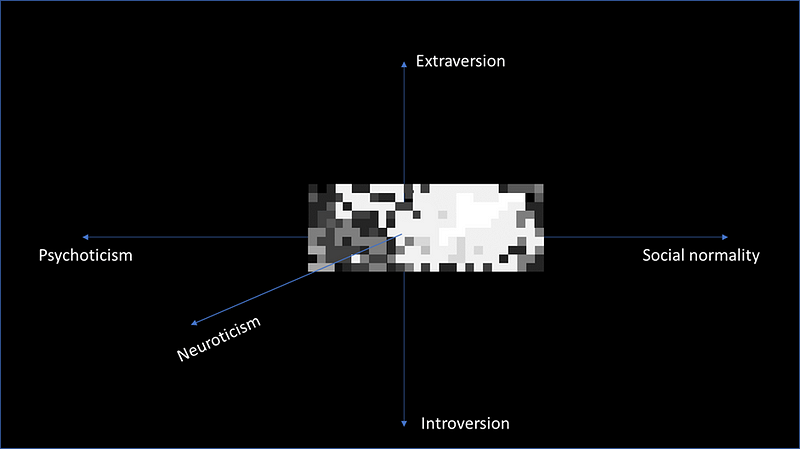
In my work, I often apply rigid body transformations to correct for misalignments caused by participant movement during scans. Each brain scan typically captures an image every two seconds for extended periods. Despite efforts to ensure participant comfort, slight movements are common, which can distort the images and complicate statistical analysis. Therefore, before conducting any analysis, I perform a rigid body transformation to align all frames with the initial brain position.
I also engage in a similar self-reflective process to monitor my personality over time. Although my personality shape changes slightly, I generally perceive myself as consistent. However, there are instances when I might feel unrecognizable due to significant deviations in my typical traits.
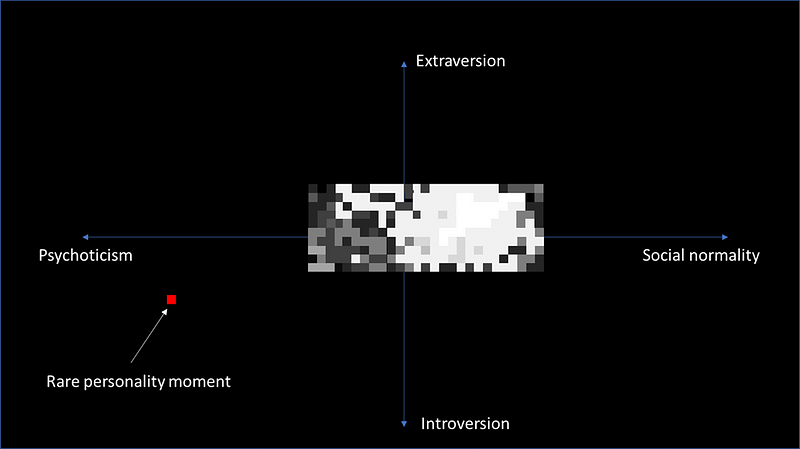
When someone close to me behaves unexpectedly, I recognize the importance of providing feedback while also trusting that these fluctuations are often temporary, much like a brief physical motion. I find that substantial, permanent shifts in personality are improbable, allowing me to approach these changes with understanding rather than worry.
In various environments, I adapt my personality systematically to meet contextual needs. For instance, I often strive to appear more extroverted in professional settings and find myself less likely to exhibit certain traits during the holiday season. This adaptability may require greater flexibility than minor shifts in my "native space."
In brain imaging, researchers frequently encounter differing image types from the same individual, which may involve slight deformations or size variations. While previous discussions have focused on translations and rotations, there are also shearing and scaling transformations.
These techniques are essential for aligning images from the same brain, as the differences between them should not be extreme. Finding an optimal "affine transformation matrix" to align one image with another can be a complex but necessary task.
Similarly, in my life, although I maintain my core identity, I find it beneficial to apply small transformations suited to various contexts. Learning the optimal personality transformation for different settings takes time. An advantage of establishing a transformation is that once identified, it can be reused in future scenarios, saving effort.
For example, I might discover that to transition from my "native" personality to my "party" persona, I need to enhance my extroversion and pro-social behaviors.
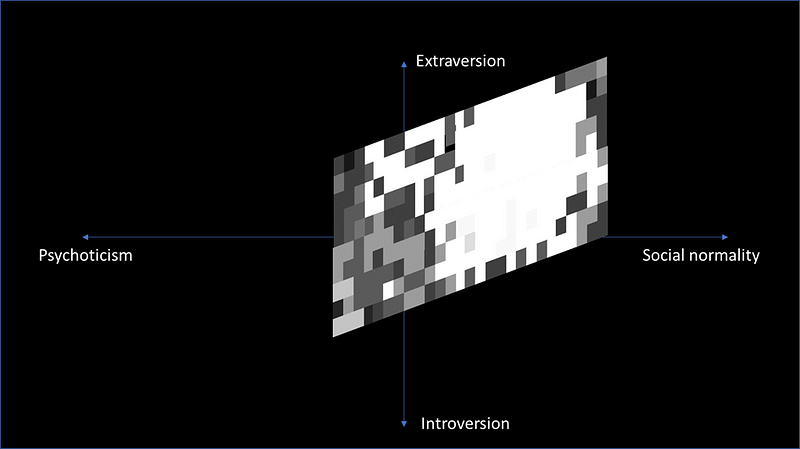
In imaging, adopting a hybrid approach by first identifying a transformation and then making image-specific adjustments can be effective. Finding the transformation matrix allows for reverse mapping from a new space back to the original. This strategy often works better when transitioning from a lower-resolution image to a higher-resolution one.
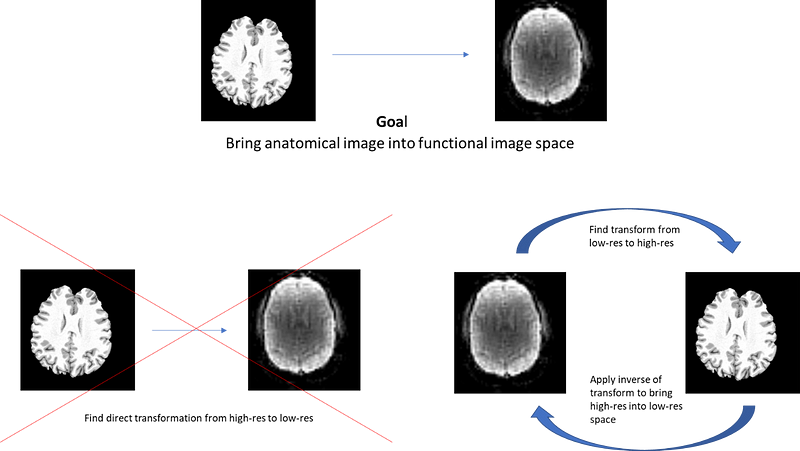
This principle, while initially counterintuitive, has also informed my approach to personal transformation. Instead of solely contemplating how I should alter my behavior for a party, I can consider how the party environment might adapt to suit my authentic self. This perspective affirms my identity and alleviates the pressure to conform.
Additionally, in imaging, the challenge of generalization often arises. When aggregating data for group-level statistics, we must account for the variability of individual brain structures. A common strategy is to align each brain image to a "standard space."
Standard spaces, such as Talairach space, provide a framework for scientists to describe results consistently. However, relying on singular examples can be misleading, necessitating the use of averaged templates derived from multiple brains.
Just as in imaging, we encounter different groups of individuals using various standard spaces. When meeting someone new, we start from our own understanding of normality and attempt to navigate their unique characteristics. This process requires an accurate "warp field" to map differences from the standard space.
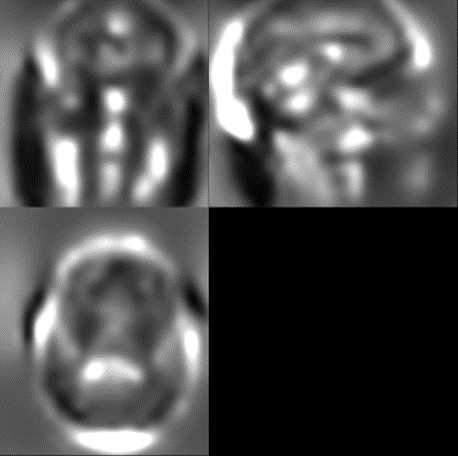
It's crucial to remember that our perception of others begins in a standard space, which may lead to tenuous interpretations unless familiarity is established. Developing the ability to accurately represent strangers can significantly enhance social interactions.
In imaging, applying "bias field correction" is a common practice to mitigate distortions caused by non-uniform environments. Similarly, I must examine my judgments of others for potential biases that may distort my perceptions.
Utilizing strategies like smoothing can also improve alignment. By focusing on broader patterns rather than isolated incidents, I can better understand new acquaintances without getting distracted by emotionally charged moments.
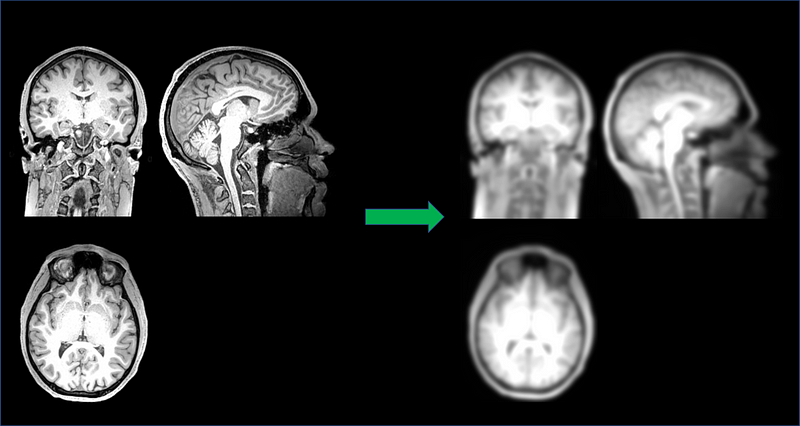
Another key insight is that the further someone is from my standard space, the more challenging it becomes to understand them. In brain imaging, this presents a dilemma, as images farther from the standard will inherently have poorer transformations.
To address this, some researchers advocate for a more nuanced approach, focusing on individual brain parcels rather than forcing all brains into the same standard space. While this method requires more effort, it often yields more relevant insights.
The parcellation technique reduces individual brains to a manageable number of regions, enabling more effective analysis within a contextual framework. This approach acknowledges the complexity of individual differences while allowing for meaningful comparisons.
The strategies employed for generalization can be highly effective in revealing overarching patterns. However, challenges arise when dealing with dynamic or longitudinal data. Applying a single transformation across time series data may seem logical, but this can lead to inconsistencies.
In practice, subtle changes over time may render previous transformations ineffective. This is particularly true in longitudinal studies, where variations can catch researchers off guard.
Just as in imaging, tracking personality changes over time can reveal surprising results. While personality traits tend to stabilize, notable exceptions exist, reminding us that transformations can occur.
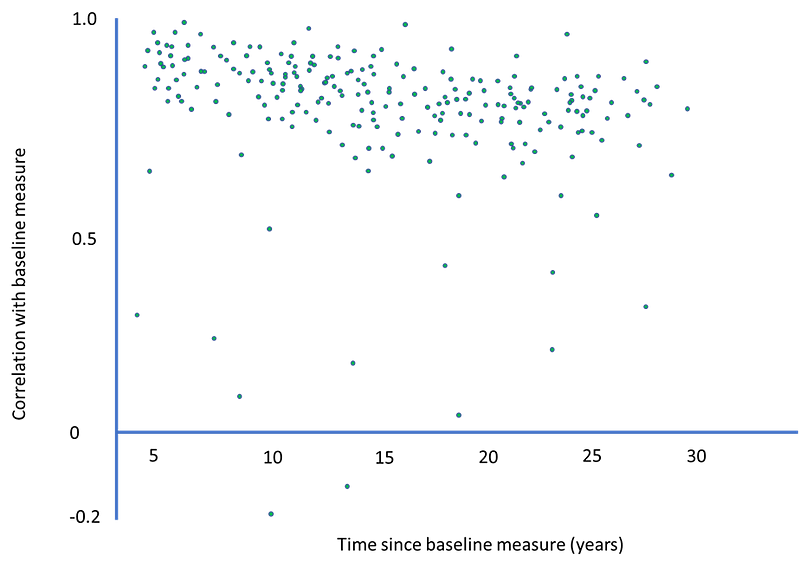
Reflecting on the principles of transformations in imaging has profoundly influenced my understanding of my own identity and how I assess others. These insights have led to more thoughtful interactions and a willingness to adapt my personality to suit different contexts, while also recognizing the importance of maintaining my core self.